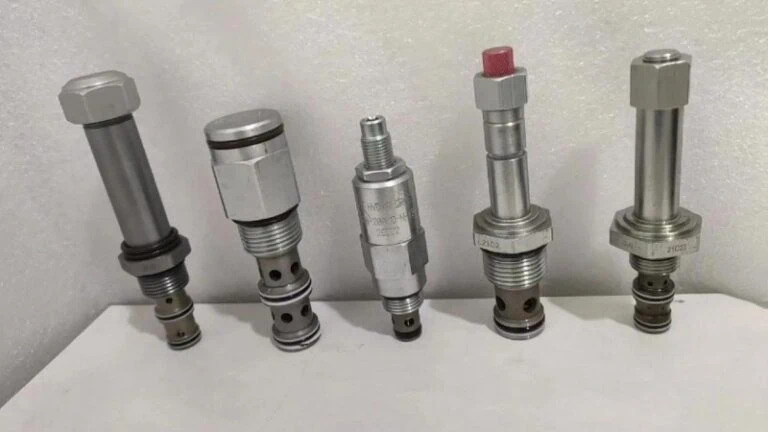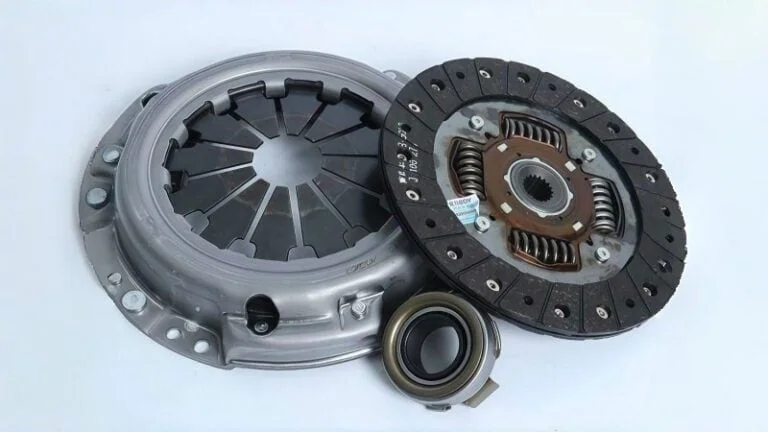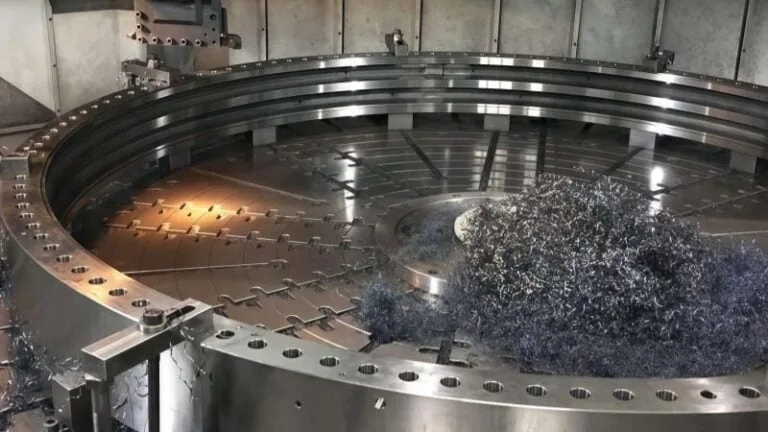-
Whatsapp: +86 13526572721
-
Email: info@zydiamondtools.com
-
Address: AUX Industrial Park, Zhengzhou City, Henan Province, China
-
Whatsapp: +86 13526572721
-
Email: info@zydiamondtools.com
-
Address: AUX Industrial Park, Zhengzhou City, Henan Province, China

Why Is My PCD Reamer Creating Inconsistent Holes and Surface Scratches?

Are you struggling to get the high-quality results promised by your PCD reamers?
Inconsistent hole diameters and surface scratches are typically caused by a combination of three core areas: hole size control (reaming allowance, runout, rigidity), surface finish factors (chip evacuation, coolant, tool edge condition), and fundamental setup errors (hole preparation, parameters, tool selection). Solving these issues requires a systematic approach, starting with your setup, diagnosing the specific defect, and making targeted adjustments.
How Can I Diagnose and Fix Oversized or Undersized Holes?
Why does the final hole size fail to match your specifications after reaming?
An oversized or undersized hole is often caused by one of four key issues: an incorrect reaming allowance, excessive tool runout, a lack of system rigidity, or improper speeds and feeds. To resolve this, you must systematically diagnose each variable, starting with the size of your pre-drilled hole and moving through your tool setup and machine parameters.
Analyzing Your Reaming Allowance
The reaming allowance is the amount of material left in the hole for the PCD reamer to remove. Think of it like sanding a piece of wood. If you only leave a tiny amount to sand, the sandpaper just polishes the surface instead of removing material. Conversely, if you leave too much, you have to push too hard, and the result is uneven.
This concept is crucial in reaming. The allowance directly impacts the tool’s ability to cut cleanly and determines the final hole size and quality.
- Too Little Allowance: If the allowance is too small, the reamer doesn’t cut effectively. Instead, it pushes or “burnishes” the material. This process compresses the material around the hole, which can then spring back, often resulting in an undersized hole.
- Too Much Allowance: When the allowance is too large, the reamer is forced to work like a drill. This creates excessive cutting forces and torque. Consequently, this pressure can cause tool deflection and vibration, leading to an oversized and often out-of-round hole.
For example, when reaming an aluminum transmission valve body, a typical radial allowance might be 0.05-0.15 mm. Forgetting to account for this and leaving 0.5 mm would overload the PCD cutting edges, likely causing an oversized hole and potential tool failure.
Below is a general guide, but it’s important to remember that these values can change based on the specific grade of your material and the design of your PCD reamer.
| Material Type | Typical Radial Reaming Allowance (per side) |
|---|---|
| Aluminum Alloys | 0.05 mm – 0.15 mm (0.002″ – 0.006″) |
| Cast Iron | 0.10 mm – 0.20 mm (0.004″ – 0.008″) |
| Hardened Steels (>45 HRC) | 0.03 mm – 0.10 mm (0.001″ – 0.004″) |
Professional Tip: The ideal allowance is highly specific to your application. Therefore, you should always consult your PCD reamer supplier’s technical documentation for the recommended allowance range for your particular tool and material combination.
Checking Tool and Holder Runout
Have you ever seen a bicycle wheel that wobbles as it spins? That wobble is called runout. In machining, runout is the off-center rotation of your tool. Even a tiny amount of runout effectively makes the reamer act larger than its actual diameter, which is a primary cause of oversized holes.
Imagine a reamer with a diameter of 10 mm. If it has a runout of just 0.02 mm, it will cut a hole that is 10.04 mm in diameter because the wobble creates a wider cutting path. For high-precision parts, this small error is often unacceptable.
How to Identify and Correct Runout
- Measurement: Use a dial test indicator placed against the shank and cutting edges of the reamer while it is slowly rotated in the machine spindle. Most precision applications demand a Total Indicated Runout (TIR) of less than 0.01 mm (0.0004 inches).
- Tool Holder Quality: The source of runout is often the tool holder itself. Standard collet chucks may not provide the necessary accuracy. For PCD reaming, upgrading to a high-precision holder is essential.
- Hydraulic Holders: These use fluid pressure to clamp the tool with uniform force, providing excellent concentricity and dampening vibration.
- Shrink-Fit Holders: These use thermal expansion to grip the tool shank, resulting in extremely high accuracy and rigidity.
- Cleanliness: Always ensure the tool shank, holder, and machine spindle taper are perfectly clean. A small chip or piece of debris can introduce significant runout.
Evaluating Machine and Workpiece Rigidity
Rigidity refers to the stiffness of your entire setup. This includes the machine, the fixture holding the part, and the workpiece itself. A lack of rigidity allows for vibration, which prevents the reamer from cutting a perfectly round and correctly sized hole.
Think of trying to write your name while sitting in a moving car. It’s nearly impossible to be precise. The same principle applies here. If any part of the system can flex or vibrate during the cut, you lose control over the final hole size.
- Machine Tool: Older or less robust machines may lack the spindle and structural stiffness to handle the forces of reaming without vibrating.
- Workpiece Fixturing: The part must be clamped securely. If the workpiece can move even slightly during the operation, the hole will likely be oversized or tapered.
- Thin-Walled Parts: A common industry challenge is reaming holes in components with thin walls, such as hydraulic sleeves or engine cylinders. The pressure from the reamer can physically distort the thin wall, causing it to spring back after the tool passes, resulting in an incorrectly sized hole. The solution often involves using special fixtures that support the workpiece from the inside or adjusting cutting parameters to reduce tool pressure.
Adjusting Speeds and Feeds for Diameter Control
While speeds and feeds are often discussed in the context of surface finish, they also have a direct impact on hole size. However, their effect can sometimes seem counterintuitive.
The Role of Cutting Speed (RPM)
Cutting speed primarily generates heat, which can lead to two potential problems.
- First, it can cause the workpiece to expand during the cut. After the operation, as the part cools and contracts, the hole may become undersized.
- Alternatively, particularly in gummy materials like aluminum, high speeds can cause a built-up edge (BUE)1. This is where material welds to the cutting edge, effectively making the tool larger and creating an oversized hole.
A very low cutting speed can also fail to cut cleanly, leading to burnishing and an undersized hole.
The Role of Feed Rate (mm/rev)
Feed rate is the distance the reamer travels per revolution.
- Feed Rate Too High: A very high feed rate increases the cutting force and tool pressure. This can lead to tool deflection and vibration, contributing to an oversized hole.
- Feed Rate Too Low: An extremely low feed rate can cause the tool to rub rather than cut, a phenomenon that work-hardens the material surface and can lead to an undersized hole and excessive tool wear.
Finding the right balance is key. The goal is to use a speed high enough to ensure a clean shear but low enough to manage heat and prevent BUE, combined with a feed rate that ensures a consistent chip load without creating excessive pressure.

What Is Causing Surface Scratches and How Do I Achieve a Flawless Finish?
Are you wondering why your reamed holes have an unacceptable surface finish?
Surface scratches and poor finish are primarily caused by four issues: ineffective chip evacuation, poor coolant application, a damaged or worn cutting edge, or system vibration (chatter). To achieve a flawless finish, you must ensure chips are flushed from the hole, coolant is optimized, the tool edge is perfect, and all chatter is eliminated.
Improving Chip Evacuation
Properly managing the small chips created during reaming is one of the most critical factors for achieving a good surface finish. If chips are not removed from the cutting zone efficiently, they get trapped between the reamer and the newly cut surface. As the tool rotates, these trapped chips are dragged along the wall of the hole, creating longitudinal scratches and ruining the finish.
Think of it like wiping a dusty table with a dry cloth. At first, it works, but soon the cloth is full of dust, and you just end up dragging the dust around, leaving streaks behind. Effective chip evacuation is like using a vacuum cleaner instead—it removes the debris completely.
Matching Reamer Geometry to the Application
The design of the reamer’s flutes plays a huge role in directing chips. Choosing the right one is essential.
| Flute Type | Chip Direction | Best For | Why It Works |
|---|---|---|---|
| Straight Flute | Neutral | Through & Blind Holes | Most common and versatile, relies heavily on coolant to flush chips. |
| Right-Hand Spiral | Pushes chips backward | Blind Holes | The spiral acts like an auger, pulling chips up and out of the hole. |
| Left-Hand Spiral | Pushes chips forward | Through Holes | This design pushes chips ahead of the reamer and out the other side of the hole. |
A classic example is in automotive manufacturing when reaming blind holes in an engine block. Using a straight flute reamer can lead to chip packing at the bottom of the hole, causing tool failure and a scratched surface. Switching to a right-hand spiral flute reamer actively pulls the chips out, solving the problem and ensuring a consistent, high-quality finish. Many modern PCD reamers also incorporate through-tool coolant channels that blast high-pressure coolant directly at the cutting edge, forcefully ejecting chips from the hole.
Optimizing Coolant Flow and Concentration
Coolant, or cutting fluid, does more than just keep things cool. It performs two vital jobs for your surface finish:
- Lubrication: It reduces friction between the cutting edge and the workpiece. Less friction means a smoother cut and prevents material from sticking to the tool.
- Flushing: It acts as a high-pressure wash to physically push chips away from the cutting zone.
If your coolant flow is weak or the concentration is off, you’ll see immediate problems with your surface finish. For instance, when reaming aluminum, which is notoriously “gummy,” inadequate lubrication will cause a built-up edge (BUE), where bits of aluminum weld themselves to the tool tip, instantly destroying the surface finish.
Professional Tip: The ideal coolant concentration can vary significantly based on the material you are cutting and the specific coolant product you are using. A 5-7% concentration might be perfect for cast iron, but aluminum may require a richer mix of 8-12% for better lubricity. Always check the recommendations from your coolant supplier to ensure optimal performance.
Inspecting the Cutting Edge for Damage and Buildup
The cutting edge of a PCD reamer is incredibly hard, but it’s also brittle. A tiny chip or microscopic flaw on the edge can act like a single, sharp tooth dragging along the workpiece, creating a consistent scratch mark around the entire hole. This is often the culprit when you see one single, repeating scratch.
A built-up edge (BUE), as mentioned before, is another major problem. This happens when workpiece material adheres to the cutting edge due to heat and pressure. This rough clump of material plows through the hole rather than shearing the metal cleanly, resulting in a rough, torn-looking surface.
You often can’t see these tiny flaws with the naked eye. It’s good practice to regularly inspect your reamers under magnification (a 10x loupe or a toolmaker’s microscope works well) to check for:
- Micro-chipping along the cutting edge.
- Signs of a built-up edge.
- Excessive wear on the tool flank.
Proper handling is also crucial. Never let PCD tools bang against each other or other hard surfaces, as this can easily chip the delicate cutting edge.
Eliminating Chatter and Vibration
Chatter is a high-frequency vibration that occurs during cutting. It’s the enemy of a good surface finish. Instead of a smooth, continuous cut, a chattering tool is rapidly bouncing against the workpiece. This creates a distinctive, often audible, ringing sound and leaves a poor surface finish that may look wavy or have a repeating pattern of marks.
Imagine trying to draw a straight line while your hand is shaking—you’d get a wavy, jagged line instead of a smooth one. That’s exactly what chatter does to your hole’s surface.
While chatter can be caused by a lack of rigidity, it can also be triggered by your cutting parameters, even in a rigid setup. Sometimes, certain RPMs create a harmonic vibration in the system.
If you suspect chatter is ruining your finish, try these adjustments:
- Vary the Spindle Speed: Increase or decrease the RPM by 10-15%. This can often move you out of the harmonic frequency that’s causing the vibration.
- Increase the Feed Rate: A slightly higher feed rate increases the chip load, which can sometimes stabilize the cut and dampen the vibration.
- Reduce Tool Stick-out: If possible, shorten the distance the tool hangs out from the holder. A shorter, sturdier setup is always more resistant to vibration.

Establishing the Correct Setup and Parameters
Often, the hidden reason for reaming problems lies in the initial setup. A successful reaming operation depends on getting the fundamentals of your setup and parameters correct from the very beginning.
Verifying Proper Hole Preparation and Alignment
A reamer is a precision finishing tool, not a hole-correction tool. It’s designed to follow the path of the existing hole, making it perfectly round and bringing it to the final, exact size. It cannot fix a hole that was drilled in the wrong place or at an angle.
Think of it like painting a crooked wall. You need to prepare the wall first—fill in holes and sand it smooth. If you just paint over a damaged wall, the final result will still be a damaged wall, just with a new color. The same is true for reaming.
- Hole Straightness: The pre-drilled or bored hole must be straight and on-location. If the initial hole is crooked, the reamer will follow that crooked path. For maximum precision, many shops will bore2 the hole before reaming to ensure it is as straight and accurately positioned as possible.
- Spindle Alignment: The centerline of the machine’s spindle must be perfectly aligned with the centerline of the hole. Even a slight misalignment forces the reamer to enter the hole at an angle, which can cause bell-mouthing (an oversized opening) and rapid tool wear. To compensate for minor, unavoidable misalignments, machinists often use a floating tool holder, which allows the reamer to move slightly and follow the hole’s true center.
Selecting the Optimal Speeds and Feeds
While we’ve discussed how speeds and feeds can solve problems, setting them correctly from the start is the best way to prevent them. Polycrystalline Diamond (PCD)3 is a high-performance material that works best within a specific range of parameters.
The general philosophy for PCD is High Speed, Moderate Feed.
- High Cutting Speed (RPM): PCD excels at high temperatures where other tool materials would fail. Running at high speeds takes advantage of this, often leading to better surface finishes and longer tool life.
- Moderate Feed Rate (mm/rev): The feed rate should be sufficient to create a proper chip and avoid rubbing, but not so high that it creates excessive tool pressure.
Here are some typical starting parameters. Remember, these are just starting points.
| Material | Cutting Speed (SFM / m/min) | Feed Rate (IPR / mm/rev) |
|---|---|---|
| Aluminum Alloys | 800 – 3000 SFM / 250 – 900 m/min | 0.004 – 0.012 IPR / 0.10 – 0.30 mm/rev |
| Cast Iron | 300 – 1000 SFM / 90 – 300 m/min | 0.006 – 0.016 IPR / 0.15 – 0.40 mm/rev |
Professional Tip: The optimal parameters for your specific PCD reamer are heavily influenced by its design (number of flutes, edge prep) and your specific material grade. Always begin with the cutting data provided by your tool supplier4. Use these values as your starting point and then adjust in small increments (around 10%) to fine-tune for the best results in your machine.
Choosing the Correct Reamer Geometry
When setting up a new process, you must proactively choose the geometry that best fits your part and material.
- Flute Type: As a quick reminder, the choice between straight, right-hand spiral, or left-hand spiral flutes depends entirely on whether you are machining a through-hole or a blind hole.
- Number of Flutes: The number of cutting edges also matters.
- More Flutes (e.g., 8-12): Generally provide a better surface finish and stability in rigid setups. They are ideal for high-volume production of materials like cast iron.
- Fewer Flutes (e.g., 4-6): Offer more space between the cutting edges for better chip clearance. This is beneficial when machining “gummy” materials like low-silicon aluminum.
- Lead Angle (Chamfer): The angle at the tip of the reamer is called the lead angle. A gentle angle (e.g., 15-45 degrees) helps guide the reamer into the hole smoothly, reducing impact and improving hole quality.
Using the Right Tool Holder
The tool holder is the critical link between your machine and your PCD reamer. Choosing a cheap or inappropriate holder is like putting budget tires on a high-performance race car—you simply won’t get the performance you paid for.
A quality holder’s primary job is to minimize runout. But it also provides the necessary gripping strength and vibration damping to ensure a stable process.
Here is a comparison of common holder types for precision reaming:
| Tool Holder Type | Accuracy (Runout) | Gripping Strength | Vibration Damping | Best Use Case |
|---|---|---|---|---|
| Standard ER Collet | Fair | Good | Fair | General purpose, less critical applications. |
| Hydraulic Chuck | Excellent | Very Good | Excellent | High-precision reaming, excellent for finish. |
| Shrink-Fit Holder | Excellent | Excellent | Good | Demands the highest accuracy and rigidity. |
For any serious PCD reaming application, investing in either a hydraulic or shrink-fit holder is highly recommended. The improved accuracy and stability they provide directly translate to better hole quality, longer tool life, and a more reliable machining process.
Conclusion
Achieving exceptional results with PCD reamers5 is not about finding a single “magic bullet” solution. Instead, it is a systematic process of control. By starting with a proper setup, understanding how to diagnose specific issues like hole size and surface finish, and knowing which variables to adjust, you can unlock the full potential of your tooling. A methodical approach that addresses everything from the initial drilled hole to the final cutting parameters will consistently produce the high-quality, precision holes that PCD reamers are designed to create.
References
- built-up edge (BUE)1 – A Wikipedia article defining and explaining the phenomenon of Built-Up Edge in metal cutting.
- bore2 – ZYDiamondTools blog post explaining the difference between rough boring and finish boring processes.
- Polycrystalline Diamond (PCD)3 – ZYDiamondTools’ comprehensive guide to Polycrystalline Diamond (PCD) tools.
- cutting data provided by your tool supplier4 – A ZYDiamondTools guide to finding the optimal speeds, feeds, and best practices for PCD reamers.
- PCD reamers5 – ZYDiamondTools’ product page for PCD reamers used in precision hole finishing.




